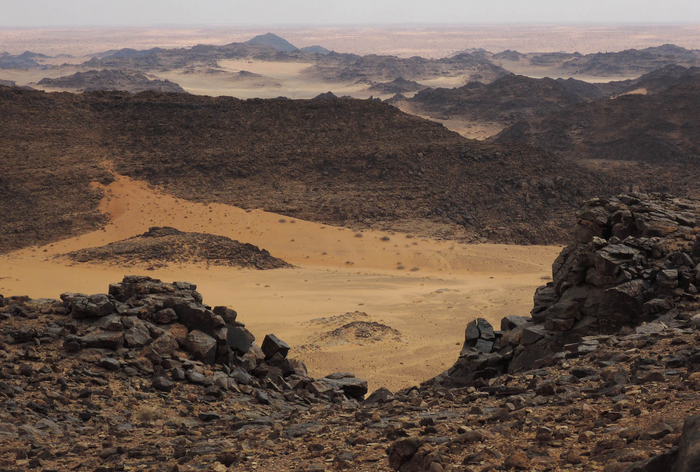
People who built massive ‘desert kites’ in ancient times first carved their plans to scale, creating an 8,000-year-old blueprint, a new study says.
Scientists found the maps carved into rocks lying on the ground in Jordan and Saudi Arabia, not far from the kites they depicted. Desert kites are ancient keyhole-shaped structures designed to guide animals that enter through one end and stick into the circular enclosure or pit at the other.
What were desert kites used for?
The current study concludes that humans used kites not only for meat but also for hides and horns, harvesting animals at a rate that may have risked extinction. At the same time, humans experimented with agriculture in the Middle East, the study says, and developed other means of producing large amounts of food.
Despite their dramatic appearance, desert kites are common in the Middle East, Caucasus and Central Asia, where researchers have identified 6,255.
Engravings of ancient hunting traps
In Jordan, researchers found a 7,000-year-old engraving near eight different kites in the Jibal al-Khasabieh area. People used stone tools to draw the designs that are only fully visible from the air.
In Saudi Arabia, the team found an 8,000-year-old engraving carved from the stone using hand picks, all to depict two different kites more than two miles apart. This engraving was much larger – about 12 feet by 8 feet.
Researchers from France and the Middle East say the newly discovered maps are the earliest scale images ever discovered.
“Few plans or maps date from the period of the literate civilizations of Mesopotamia and Ancient Egypt,” according to press release. “The ability to transpose a large space onto a small, two-dimensional surface represents a cornerstone of intelligent behavior.”
How accurate were the ancient drawings?
“The engravings are surprisingly realistic and accurate, and are also true to scale,” the document says. “These engravings are clearly mental images that could only have been made by their users and/or builders.”
At the site in Saudi Arabia, people carved the maps to a scale of about 1:175 and in line with the cardinal directions. Such precision would be useful, the papers say, in coordinating different hunting strategies after the mega-traps are built.
Airplanes first spotted desert kites in the 1920s, and later research measured their stone walls up to 3 miles long. These impressive structures date back to 9,000 years ago in Jordan, during the Pre-Pottery Neolithic period.

